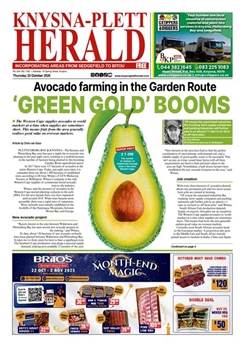NATIONAL NEWS - This World Water Week (August 23 – 28), do the planet a favour and drink only water. That’s the conclusion you should come to after reviewing the comparison of beverages and their impact on our environment, as calculated and published by J Dettling & E Tatti.
Tap water, largely because of its ‘delivery method’, had the lowest impact by far and bottled water beats all other beverages to the post, with the exception of hot tea served without milk.

Other figures, sourced from the Water Footprint Network, confirm high water footprints for beverages like tea, milk, coffee, beer and wine.
Created in 2002 by Arjen Hoekstra, the water footprint helps people understand how their consumption choices are affecting natural resources. The water footprint of a product is the amount of water that is consumed and polluted in all processing stages of its production.
In other words, the water footprint – or water usage – refers to how much water is used (volume) to make a finished product.
This measure includes both direct and indirect water usage (in the bottled water industry, that would be water for rinsing and sanitising bottles, plant and general cleaning and sanitation, vehicle washing, floor washing, toilets etc.) and includes water from boreholes and municipal source.
According to the interactive tools on the Network’s website, the following water footprints apply:
a standard cup of tea (250 ml) 30 litres
a glass of milk (250 ml) 255 litres
a cup of coffee (250 ml) 130 litres
a glass of beer (250 ml) 298 litres
a glass of wine (125 ml) 110 litres
To make a litre of each beverage, it would therefore ‘cost’ the following to grow and make:
a litre of tea 120 litres
a litre of milk 900 litres
a litre of coffee 520 litres
a litre of beer 1 192 litres
a litre of wine 880 litres
And bottled water?
South African National Bottled Water Association’s Chairman, John Weaver, says bottled water production in South Africa is an extremely water efficient business in that it takes only 1,7 litres of water to make 1 litre of bottled water. Expressed as a ratio, this is 1,7:1.
This ratio, he says, is the South African industry benchmark, and there are plants that achieve ratios of as low as 1.3 – 1.4 by recycling their bottle rinse water.
This is way below the ratios achieved by other beverages:
Beer – 1 192:1
Wine – 880:1
Milk – 900:1
Coffee – 520:1
Tea – 120:1
Bottled water in South Africa: 1,7:1
“SANBWA and its members are committed to sustainable water use,” Weaver says. “SANBWA believes that the industry has a responsibility to continuously improve and protect the conservation of water resources wherever possible.
“Our collective environmental vision is to improve members’ environmental stewardship.
This covers four areas including:
1) Water. Ensuring effective water management from source to shelf, including requirements for source protection, efficient water usage and responsible effluent practices.
2) Solid waste: Reducing, re-using, recycling all solids involved in the production and distribution of their products.
3) Energy: Promoting the efficient use of energy and fuels.
4) Post-distribution recycling: Supporting municipal and consumer initiatives for recycling packaging and bottles.
“Every year, SANBWA's third party and independent auditing body – NSF – audits members to ensure that their source, bottling facility, final product and every aspect of their bottling process adheres to SANBWA’s stringent standards,” he adds.
“The SANBWA audit consists of a desk study performed by specialists and an on-site audit performed by an experienced auditor, and requires a total of 24 man-hours of in-depth inspection and evaluation. The source is inspected physically every year and tests results are scrutenised.
“Compliance is achieved by an overall score of at least 85% and 100% for critical and fundamental requirements. Only then are members bottlers allowed to display the SANBWA logo on their bottled water products.
“The SANBWA logo acts as a seal of quality, and guarantees to the consumers the safety and sustainability of the water source. If the brand of bottled water you are buying doesn’t display the logo, ask yourself ‘why not?’,” Weaver concludes.
'We bring you the latest Garden Route, Hessequa, Karoo news'
















